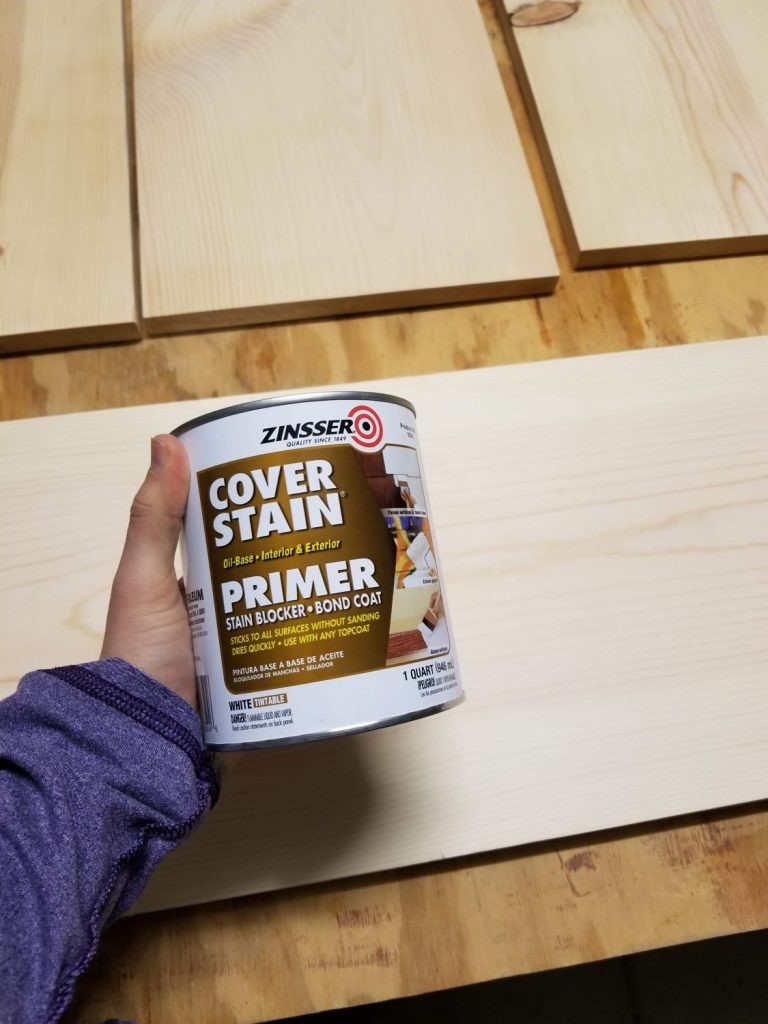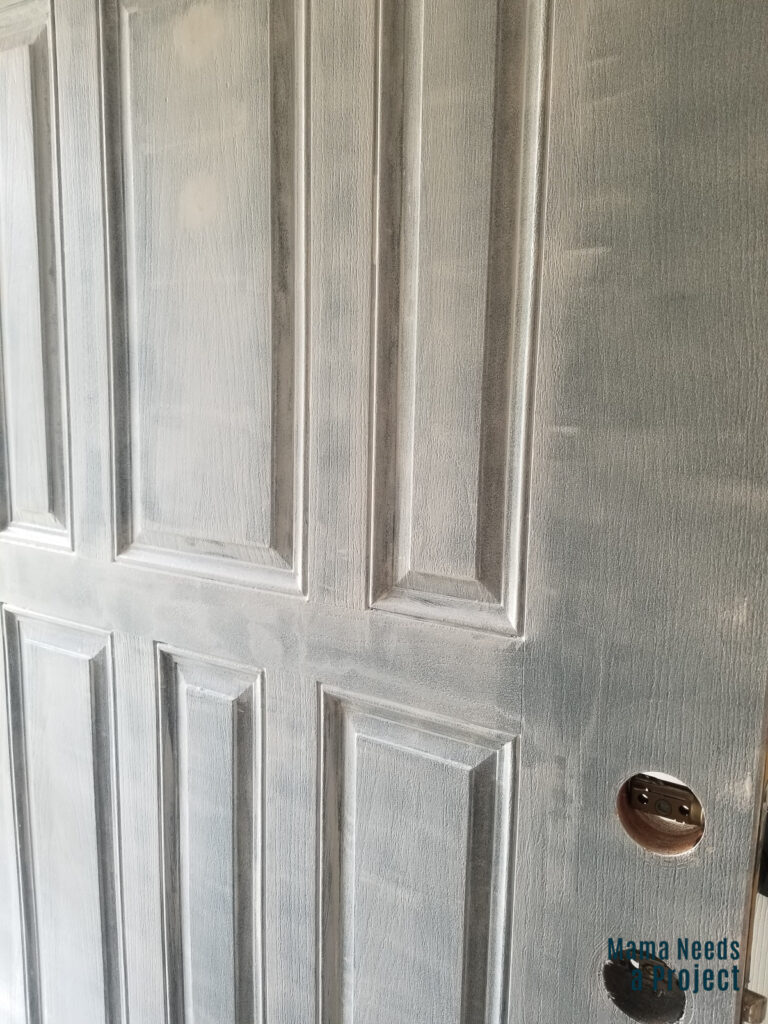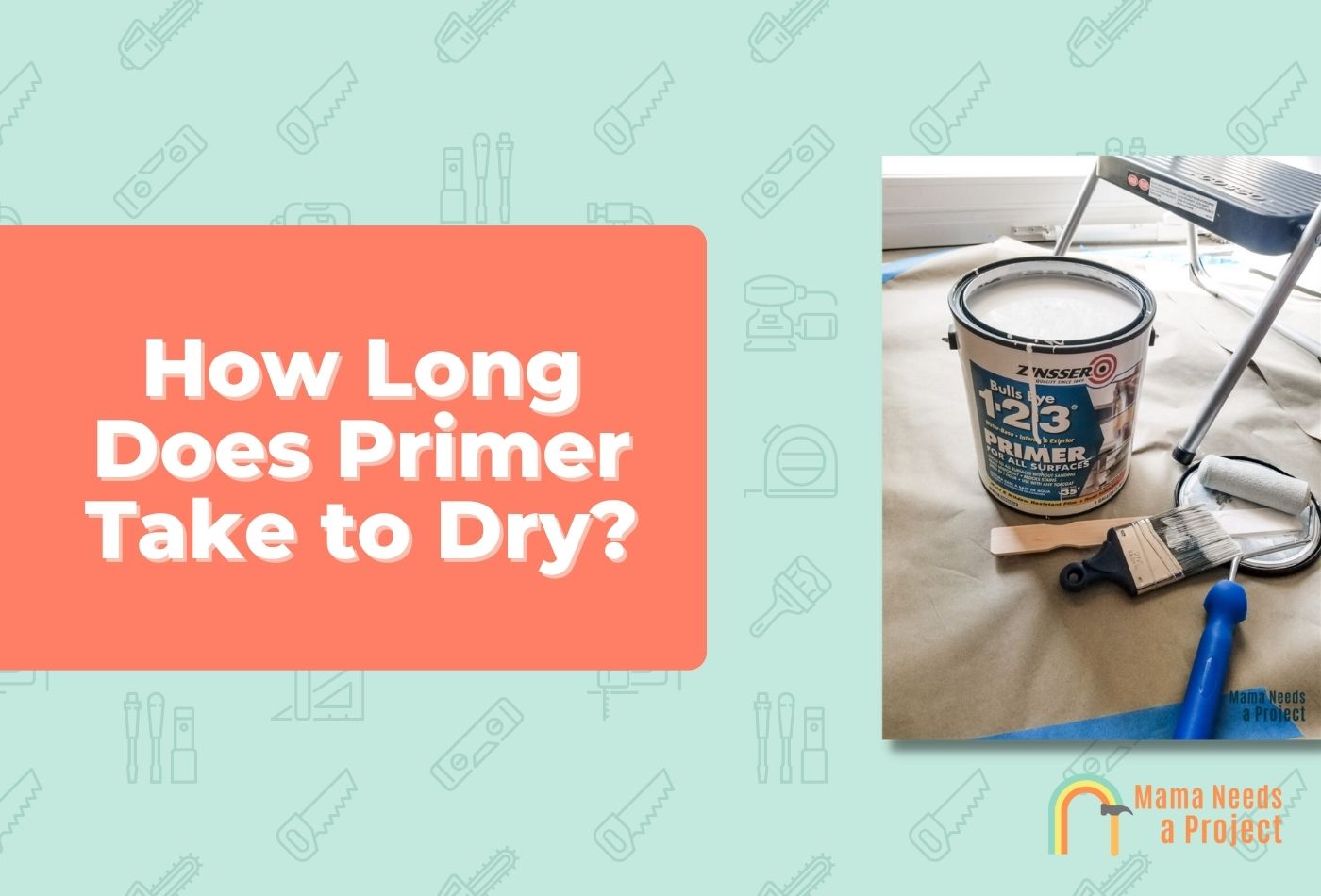How Long Does Primer Take to Dry? (3 Fast Drying Tips!)
When it comes to painting, priming your surface should almost always be a part of the process.
Priming will help you get better coverage and adhesion from your paint or stain that will produce the results you’re looking for.
I’ve done my fair share of painting jobs and I can’t stress how important priming is.
But how long does primer take to dry? And how long do you need to waiting before painting? Let’s dig in!
- For most primers, it will take a few hours to dry before painting. However, some primers can take 24 hours to fully dry.
- The time it takes primer to dry depends on several key factors such as the temperature, humidity, and type of primer you’re using.
- You can speed up the drying time by applying thin coats, placing a fan in the area, and making sure the temperature is moderate.
How Long Does Primer Take to Dry?
It is crucial that you allow the primer to dry completely before you start painting over it otherwise you could be left with a mess. If you paint while it is still wet or even slightly damp, you would have a sticky, clumpy mess and have to start all over again. No thanks!
So how long does primer take to dry?
For most primers, it will take around 1-2 hours for it to dry before painting. That said, some types of primers can take as long as a full 24 hours to dry.
How Long Does it Take Latex Primer to Dry?

Generally speaking, the drying time for latex primers will be around 30 minutes to the touch. However, you should give them at least two to three hours to dry before painting completely.
How Long Does it Take Oil Based Primer to Dry

It’s best to wait a full 24 hours before you paint over oil based primer, but sometimes it can be quicker. If you want to be on the safe side, give oil based paints and primers a full day to dry.
How Long Does it Take Shellac Primer to Dry?
Shellac primer has the quickest drying time, which can be as little as 45 minutes! Use the touch test, and be sure it is completely dry before you start painting.
How Many Coats of Primer Do You Need?
As a general rule, you will want at least two coats of primer for most projects. If you plan to paint over existing paint, especially dark colors like black or red, you may need three or even four coats to ensure even coverage.
So why do you need primer in the first place?
Primers have two jobs:
- To cover up any pre-existing paint colors or imperfections.
- To create a bond between the paint and the project’s surface.
If you are painting on brand new drywall, applying only one coat of primer may be tempting. But you need at least two coats because drywall is extremely porous and will soak up the paint, leaving a blotchy finish.
The primer acts as a barrier and a base for the paint to adhere to so you’ll get the results you want.
How Long Should Primer Dry Between Coats?
How long the primer takes to dry depends on the type of primer you use and several environmental factors like humidity, airflow, and the temperature.
Some primers are completely dry after two or three hours, but some may take up to 24 hours to dry.
The time it takes for the primer to dry between coats varies between as little as 15 minutes to several hours. You will know that a coat of primer is dry by touching it. If it is dry to the touch, it’s ready for the next coat!
If you have tacky primer, you need to allow it to dry before painting or adding another coat of primer.
Most primers have dry times printed on the cans for reference, but it’s always best to err on the side of caution and wait for it to be completely dry.
How Thick Should a Primer Coat Be?
You want your primer application to be smooth and even on the surface. If you do a light coat where some of the wall is not covered completely, you will have to come in with another coat – which means more time and money spent!
However, you don’t want to do thick coats either because the primer may drip and give you an uneven surface to paint. Additionally, applying primer with thicker coats will require more time for the primer to dry.

It’s best to apply multiple thin coats of primer for the best coverage and results you want.
How Long Does Primer Take to Dry on Wood?
The drying time is highly variable and depends on the primer type, humidity, ventilation, and temperature. As with other surfaces, the drying time for primer on wood can take anywhere from 15 minutes to four hours for most primers.
If your workspace has high humidity, it will take the primer longer to dry. It will also dry slower if your workspace is on the cooler side. Most primers suggest applying the primer in temperatures above 50 degrees Fahrenheit for best results.
Types of Paint Primer
When it comes to primers, you have options. I’ll break down what each primer is, what is the best projects to use them for, and how long it typically takes each primer type to dry before painting.
Oil Based Primer
As you might have guessed from the name, oil based primers are made using an oil base. You can use this type of primer with oil and latex paints because it is exceptionally versatile. Oil based primers are great on many surfaces including:
- metal
- finished wood
- unfinished wood
- pre-painted surfaces
- interior and exterior surfaces
Oil based primers are also an excellent choice if you are using bare wood because the primer acts as a sealant for the porous surface of natural wood.
It is also a great option if severe stains or odors such as cat urine or nicotine smoke are stuck on your walls. Oil based primers conceal odors very well, so you don’t have to smell them!
There are a few drawbacks to using an oil based primer, however.
First, they are much harsher than the other types of primer. They release VOCs (volatile organic compounds) which can cause respiratory problems for those using the primer in a poorly ventilated workspace over time.
Second, you must use solvents and thinners to clean any brushes and applicators after using oil based primers. The cleaning supplies must be disposed of properly because they are flammable.
Third, the drying time for oil based primers is much longer than other types.
Check out my Kilz vs Zinsser primer comparison to find out which is best for your project!
Latex Primer
Latex primers are water based primers that are perfect for painting interior walls and surfaces. They’re also an excellent fit for painting soft wood, like pine, priming brick, galvanized metals, and even concrete.
You can use latex primers with water based paint and acrylic paints (learn how long it takes acrylic paint to dry for more info).
Latex-based primer has a much lower amount of VOCs released, making it a much safer option for those with asthma or who want a healthier alternative to oil-based primer.
Latex primer does a great job of creating a smooth surface when you have drywall with patches or minor imperfections. It can cover stains, but not quite as well as the oil based option.
Clean up is a cinch since latex is a water-based primer, which means you can clean your brushes and applicators with water and not worry about properly disposing of the cleaning solutions.
Looking to paint or stain plywood? Check out these best primers for plywood now!
Shellac Primer
Shellac primer is made by mixing shellac flakes (a secretion from a female lac bug) with denatured alcohol. The mixture is then strained, and all impurities are removed. You can then use the shellac substance on wood, metal, plaster, and some plastics primer.
Shellac primer is the best choice if you have any stains or strong odors stuck on your project’s surface. It will work on all kinds of stains including:
- Water stains
- Smoke stains
- Pet urine stains
- Wood tannin stains
Shellac primer is a great choice when you want to repaint doors, windows, trim, and cabinets. These types of frequently used pieces will stand the test of time if you use a sturdy primer like shellac.
You can use shellac primer with both oil based paint and latex paint making it versatile and durable.
There are a few things to consider if you consider using shellac as a primer for your project.
- It costs significant more than other primers.
- It can only be used for interior projects since it can not be exposed to high heat or humidity.
- You need to use denatured alcohol to clean it up – which can be a pain.
- It would be best to use it in a well-ventilated area because it has a strong chemical odor.
Check out this guide to understand how long wood stain takes to dry!
How to Make Primer Dry Faster
1. Add a Fan
Proper ventilation is essential if you want your primer to dry quicker. If you’re working in a room with no ventilation, trying turning on a fan to help circulate the air.
2. Raise the Temperature
Most primers suggest that the temperature be at least 50 degree Fahrenheit when it’s applied. If you want to expedite the drying process, increasing the temperature a few degrees can go a long way. You can use a space heater or hair dryer to slightly increase the temperature in your room so the primer dries faster.
3. Apply Thin Coats
How thick of coats you apply will make a huge impact on how long primer takes to dry. By applying thinner coats, you can ensure your primer dries quickly so it’s ready for a second coat in no time.
FAQs
Can You Use Too Much Primer?
There are no set rules saying a certain number of primer coats is too much. You don’t want to apply a thick primer layer and then have it run or drip. So, in that case, if the primer is dripping or running down the wall or surface you are working on, then yes, you are using too much primer at one time.
What Should One Coat of Primer Look Like?
When applying your first coat of primer, you want to use enough primer to cover and smooth the surface evenly. If you are using a brush, ensure there aren’t streaks left in the primer coat. The primer should not be translucent or blotchy. That means the coat is too thin.
Can I Use Two Coats of Paint Instead of Primer?
Sometimes, it is OK to skip the primer and only use paint. This will only work if your project doesn’t have porous surfaces and has a smooth finish. A downside to using only paint instead of a primed surface is the longevity of the paint will be lessened. The paint will be more likely to chip and crack over time, which isn’t something you want..
Primer is necessary for sealing porous surfaces, ensuring you have a smooth blank slate for the paint to hold on to – which is why it’s critical to paint over Kilz and every primer.
Final Thoughts
There are pros and cons when it comes to each of the primer types, and many factors can influence primer drying time. Remember, it’s better to wait a little longer to be entirely sure the primer dries before you paint.
While applying primer may not be fun, it’s always worth your time to ensure a proper paint job.

Miriam Ronne wears many hats, including but not limited to freelance writer, blogger, professional quilter, serial DIYer, and obsessed dog mom. She loves to teach beginners how to do all sorts of crafts and techniques. If she’s not writing her next blog post, she’s either sewing a new project or playing with her pup. You can find Miriam on her blog, Stitch Obsessed, or connect with her on Instagram.

